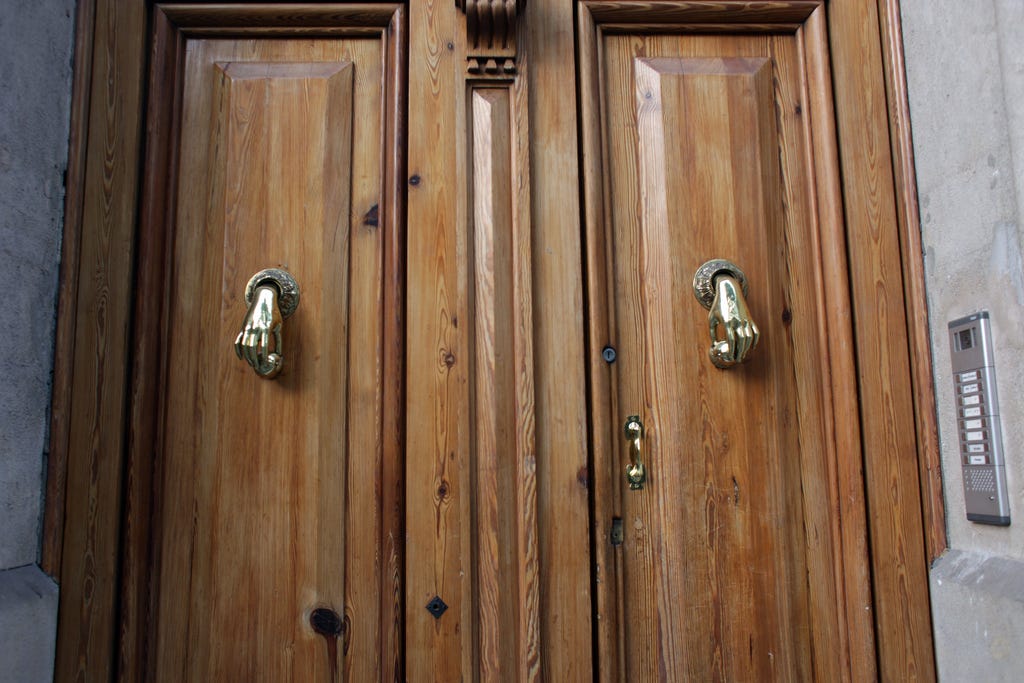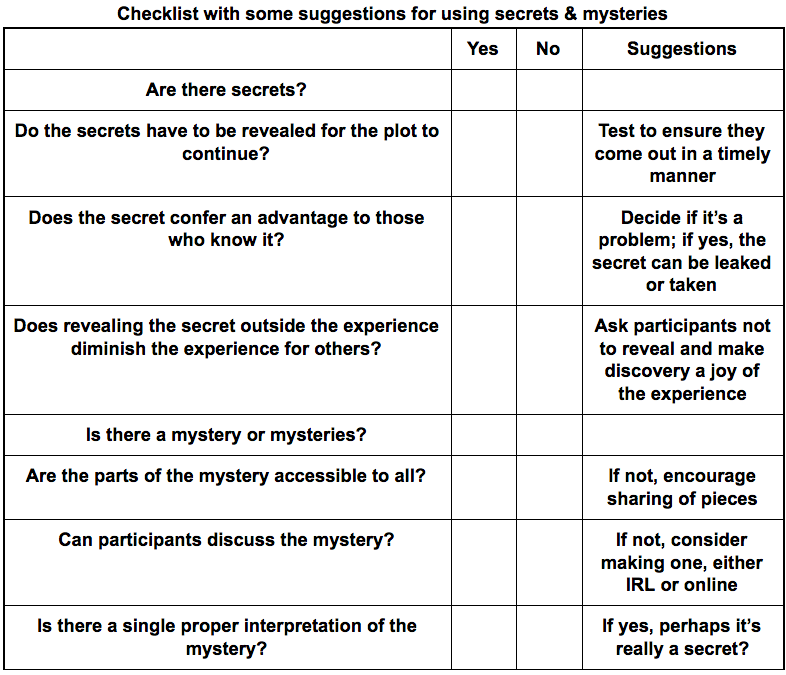
How immersive creators can layer additional meaning in their work
“I keep telling you: It’s the mystery that endures. Not the explanation. A good mystery can last forever.”
– Cain, in “A Parliament of Rooks”, Sandman v2, #40
Art often contains secrets and mysteries. These secrets and mysteries can be complicated, simple, forgettable, memorable, subjective, objective, good, or bad. Having awareness of and control over the secrets and mysteries in your creation will improve the overall production. Let’s dive in and look around at both concepts.
Secrets are hidden things meant to be discovered, and once found, their meaning is clear. Mysteries are apparent and accessible, but the meaning is interpreted. Secrets are kept by one person or a few people, while mysteries are for many people to consider. There is one answer to a secret and multiple possibilities for mysteries. Secrets are locked up, mysteries are unraveled. Secrets have an absolute value, like x = y, whereas mysteries exhibit ephemeral meaning depending on the context and the observer.
In the immersive realm, escape rooms are mostly comprised only of secrets — each puzzle has one correct solution. Once you know the secret, you are discouraged from sharing the answer with anyone outside the room. Conversely, many theatre events are mysteries — what does this action or dialogue mean in relation to the other deeds and words; how does this inform the human experience? The explanation of a mystery often reflects the perspective of the person explaining as much as that of the artists.
When secrets are clutched by individuals, they become status symbols, especially in a culture where information is the coin of the realm — think of elite wizards in ivory towers protecting their magic from interlopers. Mysteries, however, create and foster communities through bonding over discussions or interpretations; like different denominations of religions. People decipher the holy texts differently, and people gravitate towards one reading over another. There are exceptions, of course — fans who help each other in a cryptic ARG, and certain sects securing their mysteries behind a paywall.
Using Secrets and Mysteries in Your Designed Experience
When creating an immersive experience, you should know if your escapade contains secrets, mysteries, both, or neither. The overall quality of a production is not dependent on featuring secrets or mysteries, but properly handling any that are included does.
Secrets
If you have secrets in your event, how important is it that they stay hidden? If no participant discovers the secret, is the overall vision smudged? If yes, then that secret needs to be eventually found or deduced. How can you design to ensure someone finds it or figures it out? If not mission critical, if it’s an Easter egg, the camouflage or complexity can be much higher. Determine if each secret should be shared with or safeguarded from others. If it’s not for everyone to know, consider presenting pre-event rules or warnings to the audience regarding spoilers or leaking information, but concede that you can’t censor the participants, especially once they leave your event. When staging, make sure that those waiting to enter the show don’t mingle with those already in or who have gone through, e.g., have a different entrance and exit.
Mysteries
If your production features a mystery, seriously ponder the pros and cons of creating a forum for the participants to meet and discuss the experience. Do you allow them to confab after the show, a la Safehouse ’77? If so, where, and for how long? Is it optional or mandatory? Do you have an online presence, and is there a virtual place for fans of your show to congregate and opine? Do you moderate it and enforce spoiler alerts, or do the fans? Do you care if the interpretations are radically different from your vision? If you have a particularly convoluted or bizarre show, allowing the participants to debrief and discuss, either in person or online, can add a lot to the legend of your production — let it breathe outside the designed experience.
Both Secrets and Mysteries
Some immersives might contain both mysteries and secrets. A cipher might decode a message, but what does it mean? For example, Childish Gambino’s “This is America” music video features a specific kind of dancing and poses. A secret is that the moves mimic Jim Crow caricatures of African-Americans. The mystery is “what does that mean in the context of the song? What is the artist saying about America?” The video isn’t just a secret to be unlocked, it was meant to spur debate and conversation about complex topics — secrets build the mystery.
Deducing a secret might quick-release endorphins into the mind of the solver, but mysteries take longer to satisfy, if ever. Are you sure you know what David Lynch’s Mulholland Drive is about?
Pitfalls
There could be a let-down when a mystery is explained as a secret: here is the master solution that the designers/creators intended, and any other interpretation is WRRRRRRROOOOOOOOONNNNNNNGGG! If your composition features an absolute message or purpose, structuring the production as a series of secrets could spare you the pain of participants misinterpreting the show elements for a mystery and imposing their own biases. It also might save the audience from being insulted because their theory of the proceedings is ignorant or fallacious.
In the genre of secrets and powers LARPs, participants as characters have knowledge that others do not. Sometimes the player does everything they can to withhold the character information from the other attendees, using it as social currency: “Ha-ha, I was the villain all along and you idiots didn’t know it! I am better than you! I win!” What happens when a participant withholds a section of the mystery, mistakenly regarding it as a secret? As a designer, how can you, or can you, force the revelation of a secret to unfold the mystery?

Wrapping
Both mysteries and secrets are fun pillars to include in immersive events. They naturally engage the audience with interaction between themselves and the creator(s). However, fumbling either can be dislocating to the attendees. When designing your next experience, scrutinize the aspects of secrets and mysteries plus your own intention, and use your answers as part of a style and aesthetical guide. As an audience member, try to find the production’s rails — is this something you are expected to keep close the vest, or something that begs commonality? How can you synchronize with the creator’s intent to enhance the experience?
Do you agree or disagree with these points? What examples of secrets and mysteries have you enjoyed or disliked?
Join the discussion thread for this story at Everything Immersive!
NoPro is a labor of love made possible by:

…and our generous Patreon backers: join them today!
In addition to the No Proscenium web site, our podcast, and our newsletters, you can find NoPro on Twitter, Facebook, YouTube, Instagram, in the Facebook community Everything Immersive, and on our Slack forum.




















Discussion